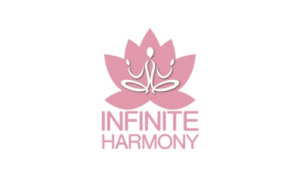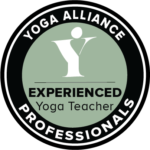Hatha Yoga
There are many types of yoga but the form I teach is traditional Hatha. Hatha means ‘the power of the will over the body.’ My teacher, Jenny Beeken, was taught by Sri B. K. S. Iyengar in India and is the founder/principle of the Inner Yoga Trust.
Benefits of Hatha Yoga
There are many physical benefits of hatha yoga, it improves flexibility and muscle joint mobility; strengthens, tones, and builds muscles; corrects posture; strengthens the spine; eases back pain; improves muscular-skeletal conditions such as bad knees, tight shoulders and neck, swayback and scoliosis; increases stamina; creates balance and grace; stimulates the glands of the endocrine system; improves digestion and elimination; increases circulation; improves heart conditions; improves breathing disorders; boosts immune response; decreases cholesterol and blood sugar levels; and encourages weight loss.
The mental benefits include: it increases body awareness; relieves chronic stress patterns in the body; refreshes the body by relieving muscle strain; relaxes the mind and body; centers attention; sharpens concentration; and frees the spirit.
Everyone can benefit from following a regular yoga routine, as it counteracts many of the problems suffered in modern life. Asanas release the physical tensions caused by hours of sitting, deep breathing gives vitality by increasing the supply of oxygen to the brain and meditation enhances the powers of concentration. Yoga improves strength and flexibility in the mind as well as the body, and aids relaxation. Yoga can enable one to relax fully, and promotes sound sleep; it also improves digestion and stimulates circulation. It frees the practitioner both physically and mentally, often heightening intuition and creativity.
A guide to the most common yoga styles
Iyengar and ashtanga yoga come from the same lineage – the teachers who developed these styles (BKS Iyengar and the late Pattabhi Jois) were both taught by Tirumalai Krishnamacharya. Many of the asanas (postures) are the same, but the approach is different. Iyengar yoga is great for learning the subtleties of correct alignment. Props – belts, blocks and pillow-like bolsters – help beginners get into poses with correct alignment, even when they’re new to them, injured or simply stiff. Anusara yoga is a more modern form of Iyengar.
Ashtanga yoga
Ashtanga is a more vigorous style of yoga. It offers a series of poses, each held for only five breaths and punctuated by a half sun salutation to keep up the pace. You can either attend a regular class or the more traditional Mysore style (see below).
Mysore style
Ashtanga yoga taught one-to-one in a group setting. Students turn up at any time within a three-hour window to do their own practice as taught by their teacher. This is my preferred style of learning yoga and, I think, the safest and most traditional. You go at your own pace, on your own breath.
Vinyasa flow
Teachers lead classes that flow from one pose to the next without stopping to talk about the finer points of each pose. That way, students come away with a good workout as well as a yoga experience. If you’re new to yoga, it is a good idea to take a few classes in a slower style of yoga first to get a feel for the poses. Vinyasa flow is really an umbrella term for many other styles. Some studios call it flow yoga, flow-style yoga, dynamic yoga or vinyasa flow. It is influenced by ashtanga yoga.
Kundalini yoga
Kundalini yoga was designed to awaken energy in the spine. Kundalini yoga classes include meditation, breathing techniques such as alternate nostril breathing, and chanting, as well as yoga postures.
Yin yoga
Yin yoga comes from the Taoist tradition and focuses on passive, seated postures that target the connective tissues in the hips, pelvis and lower spine. Poses are held for anywhere between one and 10 minutes. The aim is to increase flexibility and encourage a feeling of release and letting go. It is a wonderful way to learn the basics of meditation and stilling the mind. As such, it is ideal for athletic types who need to release tension in overworked joints, and it is also good for those who need to relax.
Restorative yoga
Restorative yoga is all about healing the mind and body through simple poses often held for as long as 20 minutes, with the help of props such as bolsters, pillows and straps. It is similar to yin yoga, but with less emphasis on flexibility and more on relaxing.
Jivamukti yoga
Founded in 1984 by David Life and Sharon Gannon, Jivamukti means “liberation while living”. This is a vinyasa-style practice with themed classes, often including chanting, music and scripture readings. Jivamukti teachers encourage students to apply yogic philosophy to their daily life
Author: Geraldine Beirne

